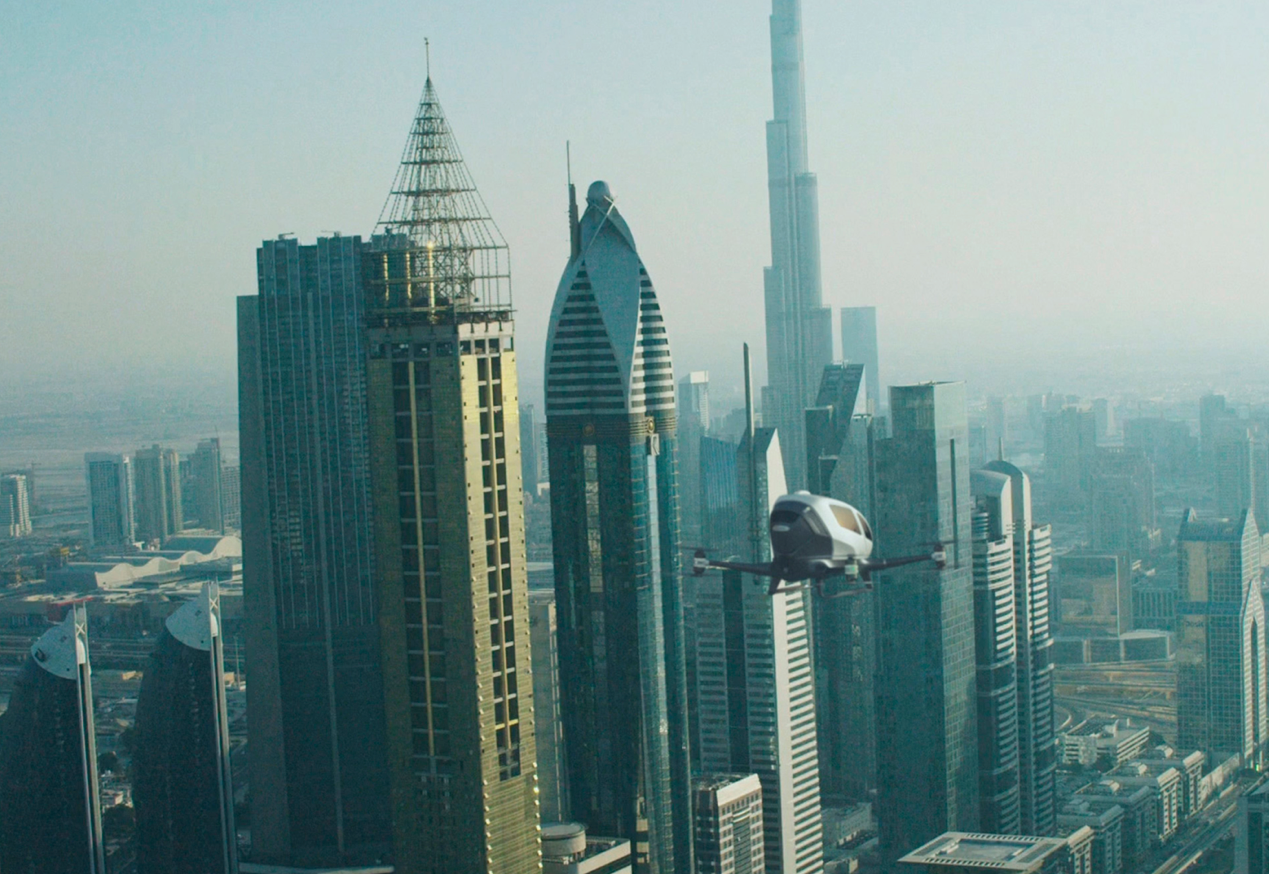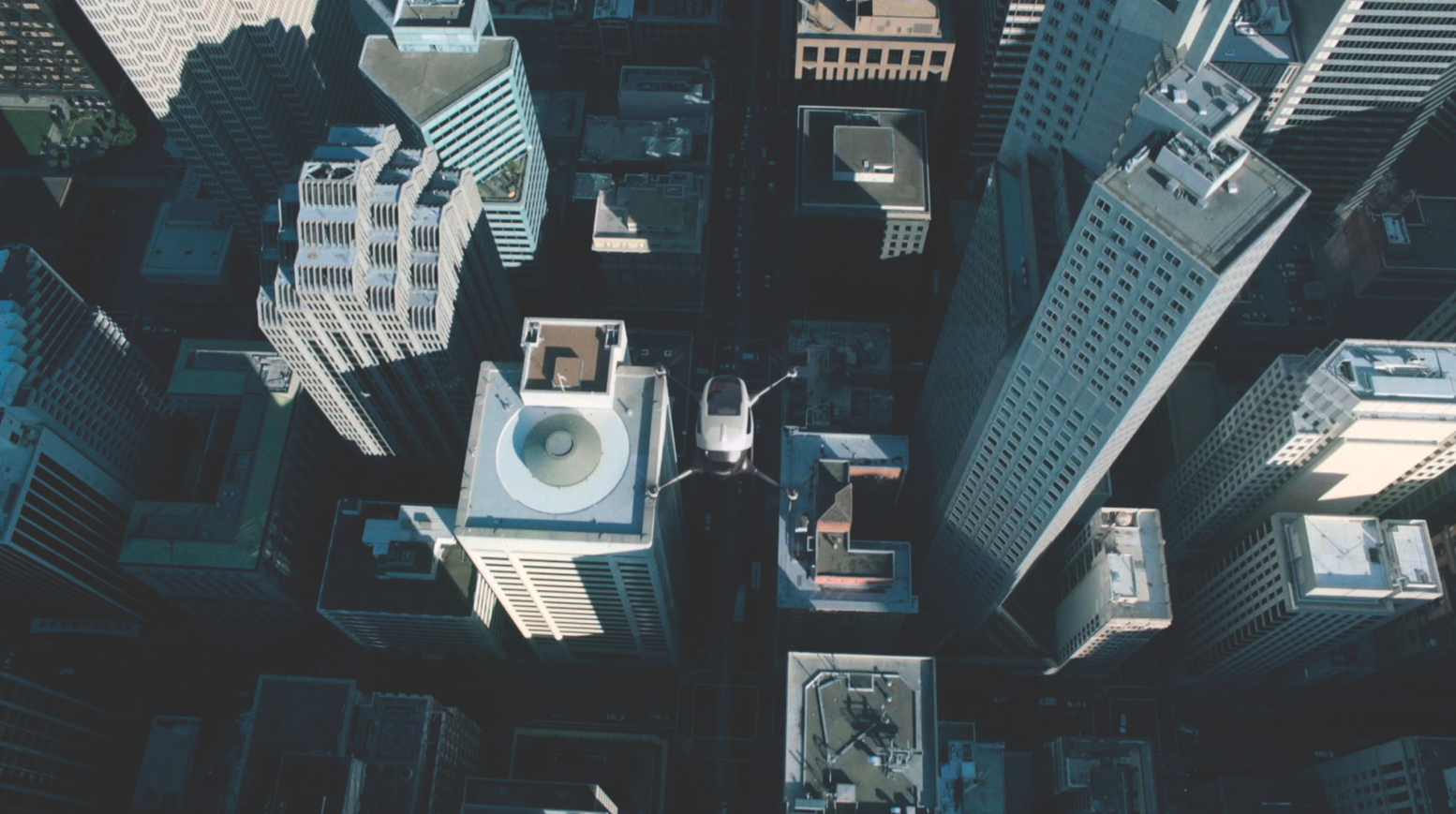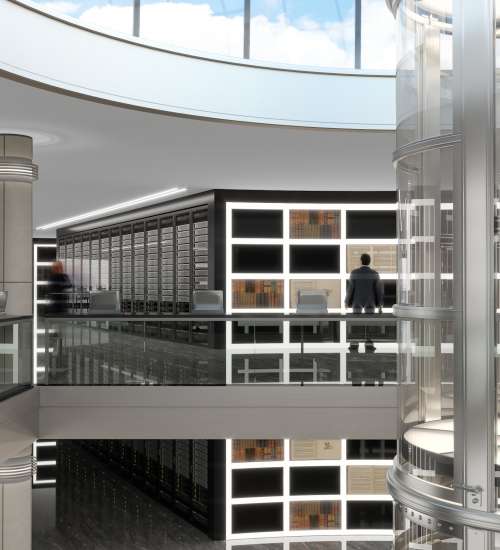Dubai, the Gulf city that seems to have shot up from the sand and into the future has embraced yet another travel innovation: the drone taxi. The Emirate is already experimenting with driverless metro lines and Hyperloop trains, and now the Dubai transport agency has announced that it will be testing unpiloted passenger drones in its skies as early as July.
“This is not only a model, we have actually experimented with this vehicle flying in Dubai's skies,” said Mattar al-Tayer, head of Dubai's transportation agency at the World Government Summit, a gathering of tech and government leaders.
The self-flying pods will not immediately replace the standard taxi—the Chinese-made Ehang 184 can only carry one passenger weighing 100 kilograms, and one bag at a time. But if it proves successful, the long-term implications are significant for congested cities from Dubai to Bangkok to Sao Paulo. While cars sit in bumper-to-bumper traffic, a passenger in the new drones will be able to cruise above the gridlock at an average speed of 100 kilometers an hour.
The small, egg-shaped pod may not appear like the most secure method of travel, but according to the Guangzhou-based manufacturer Ehang, the autonomous vehicle has a “fail safe” system, which prompts it to land in the nearest place if anything malfunctions or disconnects. If one of the motors fails, for example, the aircraft can still stay aloft with the remaining motors working in concert to compensate.
To call for a flying taxi, passengers will enter their destination into an app. The drone then maps the route and transports the passenger to their destination. The Ehang 184 currently has a battery life allowing for a 30-minute flight time and a range of 50 kilometers. When it lands, the propellers fold inwards as it lands so it can fit in a single car parking space.
Ehang is of course not the only company developing automated passenger drones. Uber believes Uber Elevate, an on-demand air transportation service, is achievable within a decade, and drone makers like DJI, 3D Robotics and Hubsan will likely put their own passenger vehicles in the race soon enough. In addition to Dubai, other cities such as Las Vegas have also announced plans to start trialing drones for public use.
Currently, two main barriers stand in the way. The first is battery life — passenger drones will require infrastructure for mid-air charging if they are to sustain longer flights. And the second is regulation. In some countries, including the U.S., transport regulations still require that drones are controlled by a live operator; other states, like the Netherlands, have moved to sanction autonomous drone networks.
Given Dubai’s enthusiasm for futuristic travel — the Emirate is also studying the potential for a hyperloop line, which would hurtle passengers to Abu Dhabi in levitating magnetic pods through low-friction pipes at 1,220 kph — it seems likely the desert city will be among the first to shuttle its citizens through the sky.














 Back
Back
